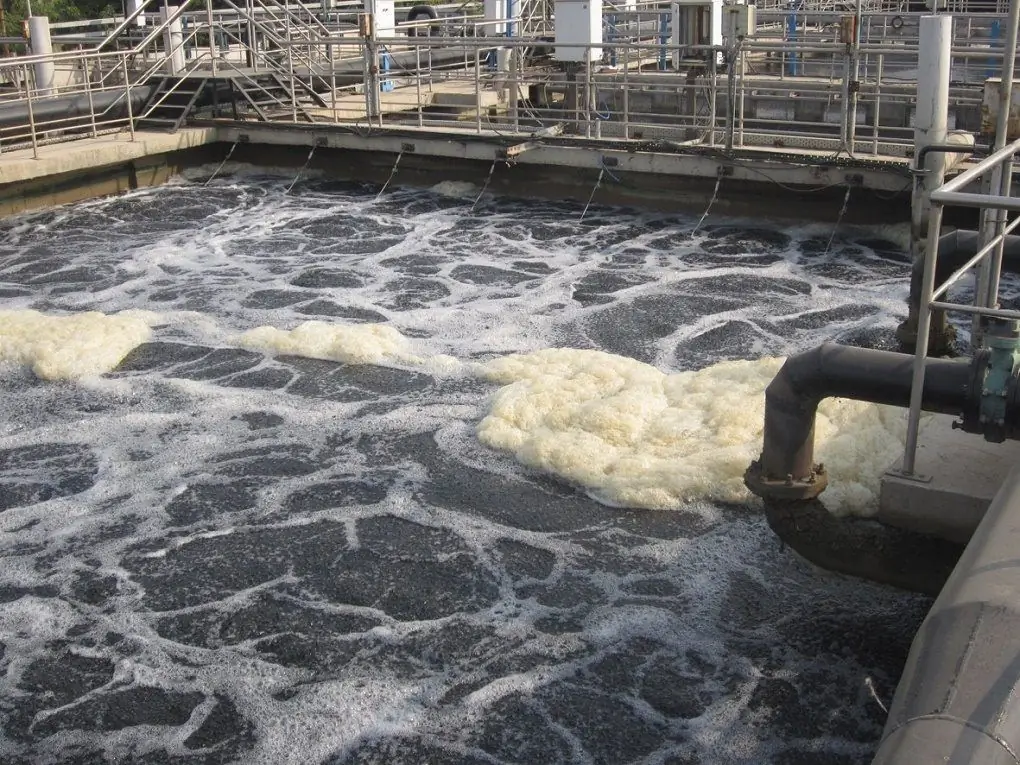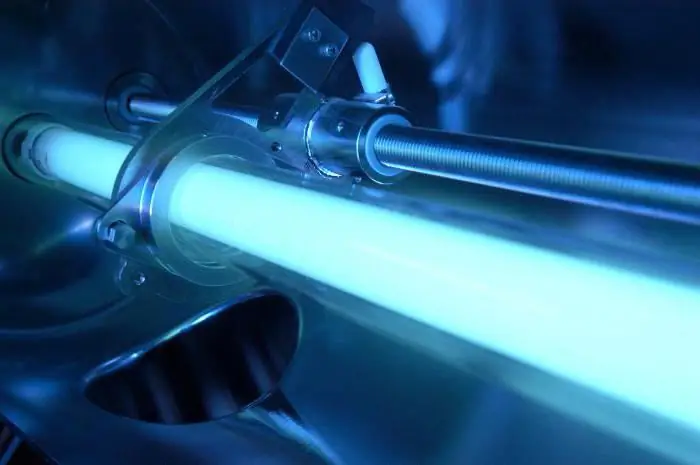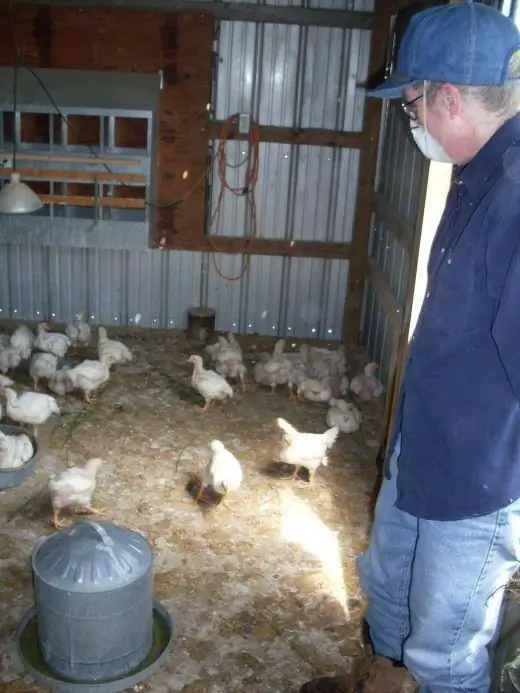2025 Author: Howard Calhoun | [email protected]. Last modified: 2025-01-24 13:10:41
The penetration of infection into the poultry house can cause the loss of an entire farm. At the first sign of unhe althy chickens or geese, you should contact the veterinary clinic and take action based on the results of the examination. As a rule, as a result of the detection of diseases, a course of restoration of the bird is carried out, but even in the case of successful treatment and prevention, the owner of the farm should not stop there. Be sure to disinfect the chicken coop, which will eliminate harmful bacteria and prevent the recurrence of diseases.

General information about the disinfection procedure
In the traditional view, disinfection is a set of measures that help to cleanse the premises of viruses, bacteria, parasites and other unwanted organisms that can harm the inhabitants. Accordingly, in the case of a chicken coop, one should first of all focus on ridding the place of an immediate threat to the bird. In addition to parasites invisible to the eye, these can be flies, ticks, fleas and other unwanted "guests". It would seem that disinfecting a chicken coop at home can be done withhelp dichlorvos, chlorophos and other drugs that are most often used to eliminate all kinds of parasites. But the fact is that all items of the chicken coop, without exception, must be processed. It should be equipment, surfaces, and even feeders. It is clear that spraying poisons in such places is undesirable. In addition, universal remedies give only a partial result, without providing a complex effect.
How to disinfect?

Today, there are many disinfectants and detergents on the chemical market that can be used to rid the poultry house of infection and parasites. But it is still worth abandoning universal and household means in favor of specialized ones. When choosing, two main conditions should be taken into account - this is compatibility with the bird and the presence of a certificate of conformity confirming the possibility of using the product for animals.
The most common chicken coop disinfectants available on the domestic market are Monclavit, Bactericide, and Virocid. But experienced poultry farmers recommend not to stop at one way to deal with adversity and arm yourself with other means, among which there are many folk ones. The fact is that not every owner can afford regular disinfection with the help of an expensive preparation - in such cases, proven and effective, but at the same time almost free methods of deep cleaning the house come to the rescue. But first things first.
Disinfection sprays

Chlorine-turpentine is considered an effective remedy from this group, which allows to disinfect the air. You can get this composition using a mixture of turpentine and bleach in a ratio of 1: 4. An exothermic reaction from a given composition in air evaporates the particles of both components. To spend the prepared solution on 1 m3 of air should be based on 0.5 ml of turpentine and 2 g of lime. Such disinfection of the chicken coop is carried out only if the ventilation is turned on once a day. There is another way to use the composition. For him, you will need to prepare several basins and place them throughout the chicken coop. Each of them should contain a small dose of the prepared mixture.
Brines
Sodium hypochlorite can also be prepared to disinfect the poultry house. It is necessary to dissolve lime with active chlorine and soda ash in water with the calculation of 200 g of two components per 1 liter. It takes about 24 hours for the solution to reach its optimum quality, during the first 5 hours it is necessary to mix several times at regular intervals. This is a relatively gentle disinfection of the chicken coop, but with long-term and regular use, it gives a good result.
Gives a good effect and monosodium s alt, which is prepared on the basis of white powder with dichloroisocyanuric acid. In essence, this is the same active chlorine. The drug dissolves in water and can be used in any form: both with the help of nebulizers, and as a passive means of influence inopen.
Solutions for viral infections
One of the main criteria for choosing strong agents against bacteria and viruses is the absence of toxicity, since the bird is sensitive to such effects. Glutaraldehyde and iodotriethylene glycol can be taken into service. The first is distinguished by the absence of smell, environmental safety and washing effect. The solution is based on nirtan, a yellowish powder that quickly dissolves in water and is suitable for interaction with warm-blooded animals. Iodtriethylene glycol is also focused on viral infections, but it also provides comprehensive protection against other parasites. In particular, it will be required if effective disinfection of the chicken coop from ticks and fleas is also needed. In appearance, it is a dark red oily liquid, the basis of which is iodine. 300 g of finely ground iodine, 150 g of potassium iodide, and about 1 liter of triethylene glycol are dissolved in water. After thorough mixing, you can proceed to disinfecting measures.
Lime disinfection

Lime acts as an active ingredient in various recipes, but it is not always possible to make a combined remedy from it. Therefore, the method of its application in a relatively pure form is relevant. Actually, the technique of disinfection is quite simple. It is enough to dilute bleach in water and leave for a day in a pre-prepared dish. As a result, effective air purification will be ensured. But it is important to remember that bleach for disinfecting a chicken coop has one significant disadvantage. This chemical is not safe for birds and should only be used in an empty area. However, the same applies to human contact. It is necessary to work with this product with gloves and, if possible, reduce the stay in the chicken coop treated with bleach.
Iodine as a means of disinfection
It is recommended to use iodine monochloride. It can be converted into an aerosol for convenient application by applying the sublimation method with a chemical reaction. Vapors of this product are used for disinfection, but even here there are some nuances. The fact is that this kind of chemical attack negatively affects metal surfaces - there is a risk of corrosion. Therefore, disinfection of the chicken coop with iodine can only be carried out partially. Even if metal equipment is excluded from the list of processed objects, it will still need to be cleaned by disinfection. One way or another, treatment with iodine should be performed once every 1-2 months. Moreover, one course should last several days, during which it is necessary to find time for separate disinfection of metal objects in the chicken coop. In general, there are many effective ready-made preparations based on iodine, among which are Monclavit and Dixan.
Chicken coop disinfection in the presence of birds

Strictly speaking, this procedure is not a disinfection, rather, it can be attributed to sanitation. That is, during the execution, the concentration of microorganisms in the room is reduced, but the complete destruction of viral infections andbacteria does not occur. This is due precisely to the minimal effect of the effects of drugs, which is due to the interests of protecting the bird. Manufacturers produce special products for such treatment, including the aforementioned "Virotsid". At the same time, you should not think that such disinfection of the chicken coop at home is useless and does not justify itself. Complete disinfection allows you to eliminate all harmful microorganisms in 1-2 approaches. A similar result during sanitation is achieved in the process of performing a series of procedures. For example, every month it is recommended to devote 3-4 days completely to disinfection. The ability to perform this operation in the presence of a bird will facilitate the work.
Preparations
If during disinfection it is allowed to perform treatment in the presence of chickens, then the preparation requires their removal. This is necessary to free up space for cleaning. Droppings, feathers, food residues and various debris should be removed. A scraper or a stiff brush will help to perform these actions - this is the only way to clean the perches from dried droppings. Next, you should start cleaning the room. It is advisable to use specialized products that will not harm the bird. Even if at first the chickens continue to live as they were, over time, exposure to toxic components can affect egg production. After that, the disinfection of the chicken coop begins in accordance with the requirements for the means used. It is important to take into account that both the preparation of the premises for sanitation and the direct processing must be carried out using personal protective equipment. At a minimum, wear a mask and gloves to prevent dust particles and bacteria from entering the body.

Recommendations for disinfection techniques
Much depends on the type of preparation or solution that is planned to be used for disinfection. If the product does not allow the birds to be indoors during processing, then it is necessary to transfer the chickens to other previously prepared perches. This option gives more cleaning options, so you can perform the procedure less often, for example, twice a year. Most often, questions arise about how to disinfect a chicken coop without removing the bird from the premises. Acceptable means for such sanitation have already been considered, and as for the procedure itself, it can be carried out in parts. First of all, perches should be disinfected, and then proceed to the flooring and walls. Feeders and equipment can be processed separately and even by other means.
Chicken coop parasite prevention
Reduce the frequency of disinfection activities will allow careful hygiene in the chicken coop. The room should be periodically ventilated and dried so that there is no dampness in it - a favorable environment for the development of harmful microorganisms. Preventive disinfection of the chicken coop with lime with the treatment of walls and bedding will also not require much effort, but it will prevent the appearance of dangerous bacteria. Surfaces can be whitewashed, and if the bird is kept on the floor, it is enough to pour quicklime onfloor, covering it with a bedding.

Conclusion
Rehabilitation of utility rooms that contain living creatures always imposes a great responsibility on the owner. Even if the instructions for the use of chemicals are followed, there is a risk of harming the bird. The problem is that many chemical exposure factors are individual, and if the treatment was successful in one case, then there is no guarantee of the same result when servicing other objects. Therefore, the most effective means for disinfecting a chicken coop or other place where poultry are kept are those that have already been successfully tested in similar conditions. For the same reason, special attention should be paid to the introduction of new individuals into the economy. But in any case, it is worth starting from elementary hygiene protection measures, the observance of which prevents negative biological processes in the form of the development of fungi, bacteria and other unwanted organisms.
Recommended:
Wastewater disinfection: methods and their features

Description of current wastewater treatment methods. Physical, chemical, physico-chemical and biological methods of disinfection. Combined application of various methods for the destruction of pathogenic microorganisms in wastewater
UV water disinfection: principle of operation, installation. Drinking water - GOST valid

Technologies in the field of water treatment do not stand still. Today, many methods are used to ensure the required quality of drinking liquids that meets the requirements of GOST. One of them is ultraviolet disinfection of water. It will be discussed in the article
Chicken louse and the fight against it: preparations for parasites, prevention

Chicken louse - (otherwise, feather-eater) a small insect that lives exclusively on the body of poultry and causes great damage to its he alth with its parasitic activity. There are about 40 such pests, and several of them can attack a feathered individual at the same time
Building a chicken coop on the site

How to properly equip a chicken coop with nests, perches, drinkers, feeders and winter baths. Warming for the winter
Treatment of pododermatitis in rabbits: disinfection of wounds, wound healing ointments, list of drugs

Pododermatitis (colloquially corns) is often found in adults of various species. Wound formation is influenced by various factors. Pododermatitis in rabbits is severe, and its treatment is difficult. Those who wish to breed this fur-bearing animal need to know how to avoid infection of pets and properly provide them with medical care

